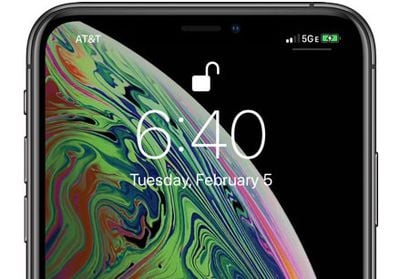AT&T and Sprint have settled a lawsuit that Sprint levied against AT&T for its misleading "5G Evolution" or "5GE" branding that AT&T uses for its upgraded 4G LTE network.
A spokesperson for AT&T today told Law360 that the matter has been "amicably settled." Details on the terms of the settlement have not been shared, but AT&T is planning to continue to use its 5GE branding.

AT&T earlier this year began displaying a 5GE icon on some iPhone and Android smartphones. 5GE is AT&T's misleading name for an enhanced 4G LTE network and is not actual 5G connectivity, which incensed Sprint.
After AT&T rolled out the 5GE terminology, Sprint filed a lawsuit in federal court against AT&T in an attempt to prevent AT&T from using 5GE labeling. Sprint accused AT&T of damaging the consumer reputation and understanding of true 5G and potentially hurting Sprint's planned 5G rollout this summer.
Sprint also took out a full page ad in The New York Times to call AT&T out for the misleading labeling, calling 5GE "fake 5G." From Sprint's ad:
While Sprint is working hard to deliver mobile 5G and the first 5G smartphone in the U.S., AT&T is hard at work trying to convince you that they already won the race to 5G with something they call "5G Evolution." That is simply untrue.
Don't be fooled. 5G Evolution isn't new or true 5G. It is fake 5G.
They would love for you to believe they are different ... better. The truth is AT&T is simply offering customers a nationwide 4G LTE network just like Sprint and all the other major wireless carriers. It's not 5G.
AT&T uses 5GE for its 4G LTE networks that offer features like three-way carrier aggregation, 256 QAM, and 4x4 MIMO to provide faster connection speeds to consumers. These features are in no way limited to AT&T and are offered by other carriers, but no other carrier is using fake 5G branding.
Unsurprisingly, speed tests have confirmed that AT&T's 5GE service is no faster than LTE from Verizon and T-Mobile.
AT&T has defended its 5GE branding by calling 5G Evolution "first step on the road to 5G" and by claiming that customers "love" the 5GE branding because they "want and deserve to know" when "better speeds" are available.
"We understand why our competitors don't like what we are doing, but our customers love it. We introduced 5G Evolution more than two years ago, clearly defining it as an evolutionary step to standards-based 5G. 5G Evolution and the 5GE indicator simply let customers know when their device is in an area where speeds up to twice as fast as standard LTE are available. That's what 5G Evolution is, and we are delighted to deliver it to our customers.
Smartphones that support true 5G connectivity are only now just beginning to trickle out, and Apple isn't expected to launch one until 2020. No existing iPhone will be able to connect to a 5G network because it requires new hardware.
5G networks from the four major carriers in the United States are going to be available starting in 2019, but expanded coverage and full rollouts will take some time.























